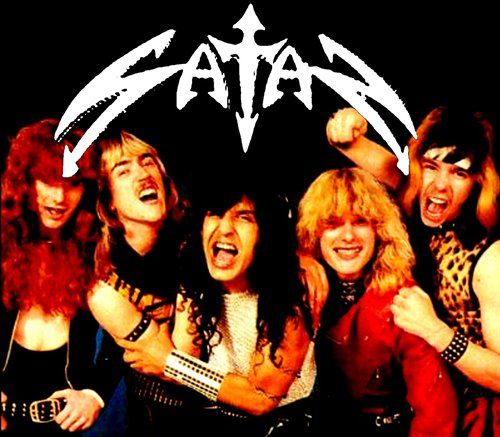Why So Many Metal Bands Reference Satan
Great question—and one that cuts to the heart of heavy metal’s identity. Here’s a full article-style breakdown of “Why So Many Metal Bands Reference Satan.”
Why So Many Metal Bands Reference Satan
From album covers dripping with blood to lyrics invoking demons and the underworld, Satanic references are everywhere in heavy metal. But why? Why do so many metal bands use Satanic imagery, lyrics, and themes? Are they all devil worshippers, or is there something deeper going on?
Let’s unpack the history, psychology, and purpose behind the devil’s favorite genre.
1. Satan as a Symbol of Rebellion
At its core, heavy metal is anti-authority. It challenges systems, questions religion, and confronts social norms. And what better symbol of rebellion than Satan—the original rebel who defied divine authority?
For many metal bands, Satan isn’t a religious figure. He’s a metaphor. A symbol of standing up to power, choosing individual freedom, and rejecting conformity. This symbolic use of Satan comes from works like John Milton’s Paradise Lost, where Satan is depicted as a tragic figure who says, “Better to reign in Hell than serve in Heaven.”
In this sense, invoking Satan is not about evil—it’s about liberation.
2. Shock Value and Cultural Provocation
Let’s be honest—Satanic imagery grabs attention. In a world where every band is trying to stand out, pentagrams and inverted crosses are a surefire way to provoke a reaction.
In the 1980s, when metal was exploding and society was more conservative, nothing freaked people out more than the devil. Bands like Slayer, Venom, and King Diamond used this to their advantage. The media ran with it, religious groups condemned it—and sales skyrocketed.
For many artists, Satan wasn’t a belief. He was a tool to shock, stir controversy, and create mystique.
3. The Influence of Horror and the Occult
Heavy metal has always shared DNA with horror films and gothic literature. Both genres love exploring the dark, the forbidden, and the supernatural. Satanic references in metal often reflect a fascination with the macabre, not a religious allegiance.
Bands like Mercyful Fate, Ghost, and Black Sabbath often pull from occult themes, ancient myths, and horror tropes. Their music is cinematic—painting worlds filled with demons, witches, and fallen angels.
It’s art, not ritual.
4. Religious Trauma and Critique
Many metal musicians grew up in strict religious households. For them, referencing Satan can be a way to process, question, or reject religious dogma they experienced as oppressive or hypocritical.
In this context, Satan becomes the ultimate anti-religious icon. Referencing him can be cathartic—a way to heal or express anger toward systems that caused harm.
Some songs mock religion. Others mourn lost faith. Some question God altogether. But almost all of them aim to start a conversation about belief, morality, and control.
5. Subgenres That Took It Seriously
While many bands use Satanic themes symbolically or theatrically, some took it literally—especially in the black metal scene of the 1990s.
In Norway, bands like Mayhem, Burzum, and Gorgoroth embraced Satanism not just as image but as ideology. This led to real-world events—church burnings, violence, and criminal activity—that made headlines and shaped the legacy of black metal.
But even here, beliefs vary. Some follow LaVeyan Satanism (which is atheistic and focused on individualism), while others adhere to more theistic or spiritual views. Most black metal bands today walk a line between aesthetic expression and personal philosophy.
6. Aesthetic, Not Allegiance
It’s crucial to understand that most metal bands don’t believe in Satan. They believe in freedom of expression, artistic darkness, and the power of symbolism.
Just like horror movies use demons and monsters to explore human fears, metal uses Satan to explore rebellion, suffering, and mortality.
It’s drama. It’s theater. It’s raw emotion with fangs.
7. Fan Connection and Identity
For fans, Satanic references often represent outsider identity. Many metalheads have felt alienated or misunderstood. Embracing the “dark side” becomes a badge of honor—an “us vs. them” stance against mainstream society.
Wearing a shirt with a pentagram or listening to a song about Hell isn’t about evil. It’s about embracing complexity and rejecting fake smiles and plastic positivity. It’s about finding beauty and honesty in the shadows.
Conclusion: The Devil You Know… Is a Metaphor
So, why do so many metal bands reference Satan?
Because Satan is the ultimate anti-hero. He’s rebellion, darkness, mystery, and power. Whether used as metaphor, myth, or mood, the devil helps metal express what other genres can’t.
It’s not about worship. It’s about warning, wondering, and wailing against the silence.
In the end, Satan in metal isn’t about faith—it’s about freedom.



